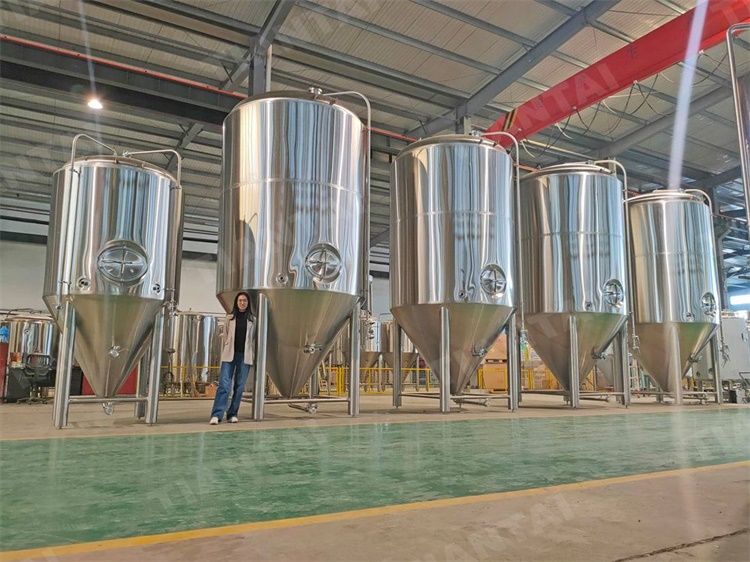What follows are the typical fermentation schedules for beers fermented with ale and hybrid yeast strains in Tiantai fermenter unitank.
ALE FERMENTATION SCHEDULE
1. Chill wort to target fermentation temp (66°-68°F/19˚-20˚C), place in temp controlled environment, set temperature on fermentor, and pitch yeast starter.
2. After 2-5 days (OG dependent) of active fermentation, set temperature to 75°F/24˚C.
3. After 2-5 more days, once FG is stable and the sample is free of off-flavors, cold crash the beer to 30-32°F/0˚C.
4. 12-24 hours later, when the beer is below 50°F/10˚C, fine with gelatin.
5. 24-48 hours later, package the beer.
.jpg)
Higher OG beers may take a tad longer to fully ferment, and in my opinion, maltier big beers benefit from a bit more conditioning (cold in keg), so those are some exceptions. Otherwise, APA, Brown Ale, ESB, IPA, Dry Stout, I’ve had great luck going grain to glass with all of these styles in 2 weeks or less!
HYBRID FERMENTATION SCHEDULE
When using hybrid strains to make styles such as California Common, Kölsch, and Cream Ale, I prefer to ferment on the cooler end of the range in hopes of limiting the development of yeast character caused by warmer fermentations. Because of this, not only do I propagate a touch more yeast than I do for ales, but I use a slightly different fermentation schedule as well.
1. Chill wort to target fermentation temp (58°F/14˚C), set temperature of fermentor, and pitch yeast starter.
2. After 3-7 days (OG dependent) of active fermentation, or once attenuation is over 50%, control fermentation temperature to 70°F/21˚C.
3. After 3-5 more days, once FG is stable and the sample is free of off-flavors, cold crash the beer to 30-32°F/0˚C.
4. 12-24 hours later, when the beer is below 50°F/10˚C, fine with gelatin.
5. 24-48 hours later, package the beer.
As you can see, this schedule is the same as ale fermentation schedule except for that it allows for a few more days of active fermentation in 1000l fermenter unitank.
[email protected]
Emily Gong




.jpg)

Get In Touch